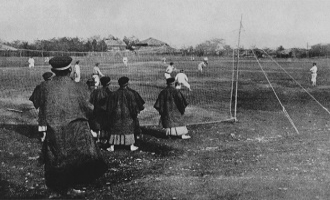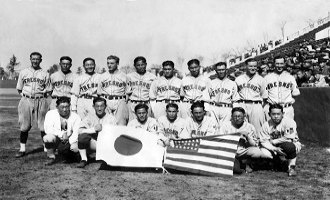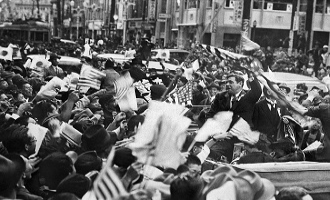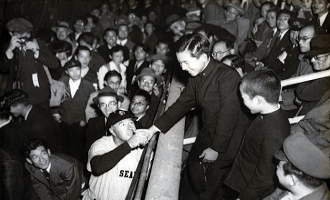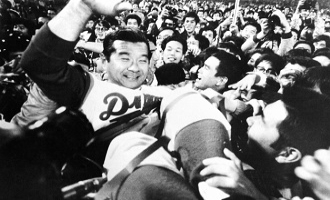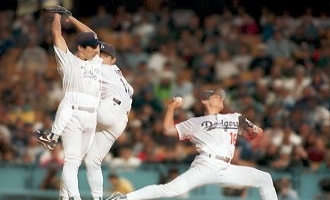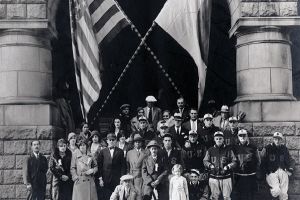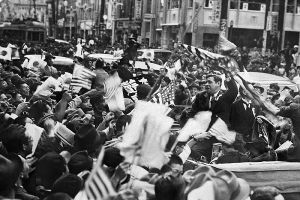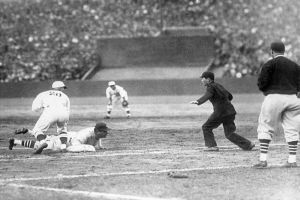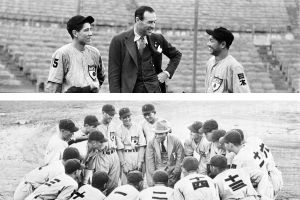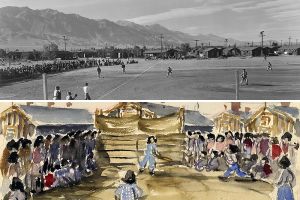The Big Leagues
メジャーリーグの来日
Japan’s growing militarism in Asia during the 1930s put the nation on a collision course with the United States. While the two governments jousted against one another, U.S.-Japan civil society exchanges flourished like never before. While Hollywood movies and jazz music were massively popular in Japan, baseball topped the list of favorite American cultural imports for Japanese from all walks of life.
Major League Baseball (MLB), the U.S. professional organization, considered the financial risk of dispatching its top players across the Pacific for off-season exhibition tours. The construction of the first modern steel and concrete stadium in Tokyo helped solidify the decision, and the Major League All-Stars visited the country in 1931 immediately following the Japanese invasion of Manchuria. Three years later, the MLB tour, starring George Herman “Babe” Ruth, was welcomed by rapturous crowds.
The 1934 tour gave rise to Japan’s first professional baseball club, Dainippon Yakyu Kurabu, the forerunner of the Tokyo Yomiuri Giants. Its star pitcher, 17-year-old Eiji Sawamura, astonished the visiting majors by striking out several players, including Lou Gehrig and Babe Ruth, in succession. Although World War II would temporarily disrupt professional baseball’s development in Japan, the public remained captivated by the sport.
メジャーリーグの来日
1930年代になると、日本はアジア各地で軍国主義を拡大し、米国との衝突が避けられない状況となっていました。日米政府間の緊張が高まる一方で、市民交流はかつてないほど活況を呈していました。ハリウッド映画やジャズが日本中を席巻する中、一番人気の高かった米国文化は野球で、あらゆる人たちが夢中になっていました。
米国のプロ野球組織である「メジャーリーグ・ベースボール (MLB)」は、オフシーズンの巡業ツアーで有力選手を太平洋の反対側に派遣する財政リスクを検討していました。しかし、東京で初めて近代的な鉄筋コンクリート球場が建設されたことが、派遣決定の後押しとなり、満州事変直後の1931年、MLB選抜チームが来日しました。3年後には、「ベーブ・ルース」ことジョージ・ ハーマン・ ルースといったスター選手を擁したMLBチームが日本を訪れ、熱狂的な歓迎を受けました。
1934年の遠征をきっかけに誕生したのが、読売ジャイアンツの前身である日本初のプロ野球チーム「大日本東京野球倶楽部」でした。エース投手であった17才の沢村栄治は、ルー・ゲーリックやベーブ・ルースといった選手たちから次々と三振を奪い、メジャーリーガーたちを圧倒しました。日本のプロ野球界の発展は、第2次世界大戦により、一時的に中断を余儀なくされましたが、大衆の野球熱が冷めることはありませんでした。
